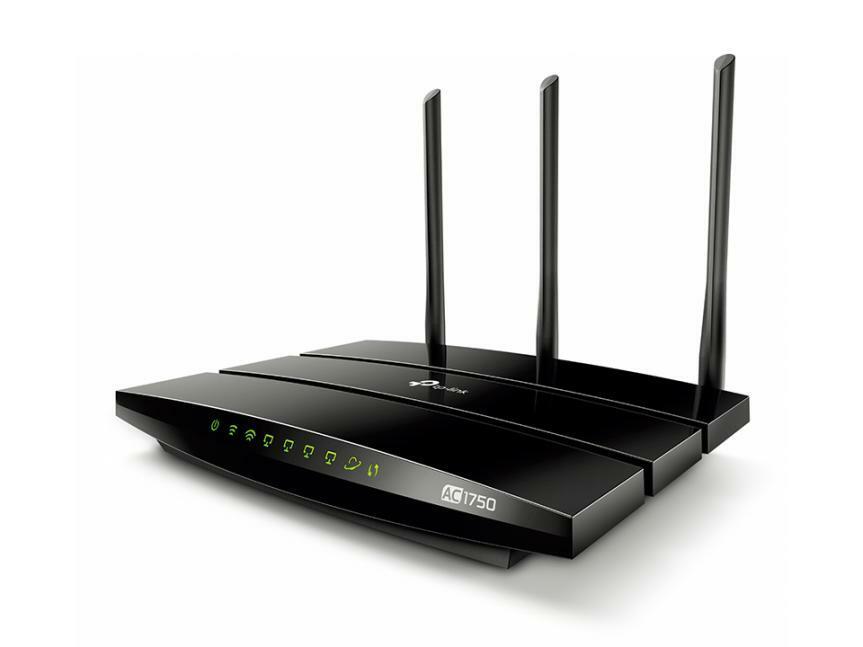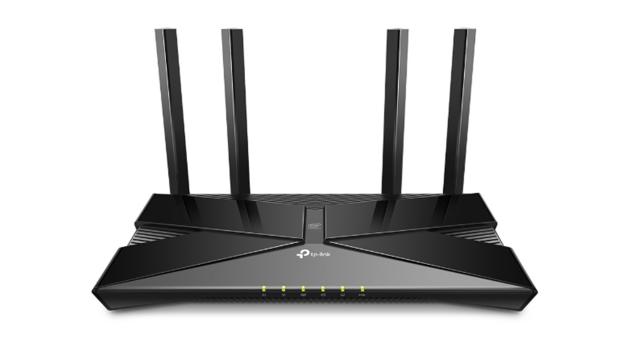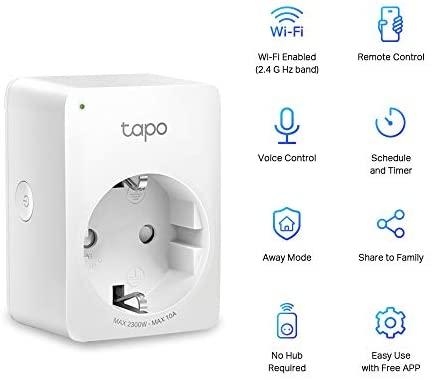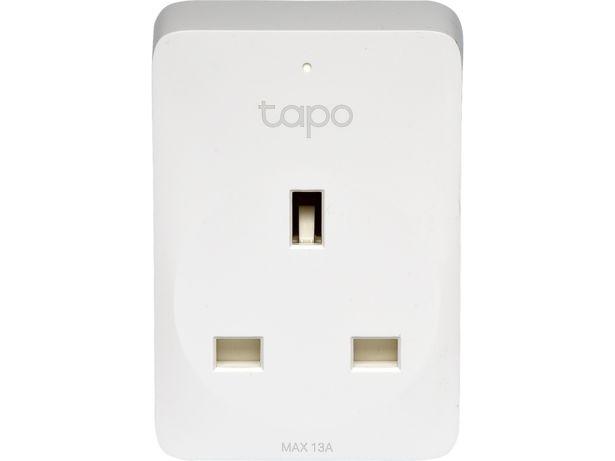The Best Budget Wi-Fi Routers of 2022
What to Look For in a Budget Wi-Fi Router in 2022Best Budget Router Overall: TP-Link Archer AX3000 (AX55)Best Budget Router Under $100: ASUS RT-AC66U B1Best Budget Gaming Router: D-Link DIR-882Best Budget Wi-Fi 6 Router: TP-Link Archer AX1500 (AX10)Best Budget Mesh Router: TP-Link Deco X20
What to Look For in a Budget Wi-Fi Router in 2022
The name of the game when it comes to picking a budget wireless router is balancing cost against features. While there’s certainly a lot of overlap with non-budget routers, having a good understanding of what features are necessary and what features are “nice to haves” will ultimately dictate how much you will save.
RELATEDHow to Use Quality of Service (QoS) to Get Faster Internet When You Really Need ItFor example, if you have a lot of devices that you plan to connect to your router, then MU-MIMO is a core feature you’ll want to have. Another one is Quality of Service (QoS), which allows you to set bandwidth priorities for different devices and is incredibly useful in a busy household.
Alternatively, if you have a single gaming PC or 4k TV, then Wi-Fi 6 and beamforming technology can help reach speeds and stability that serve both those needs.
One thing we will suggest is to try and push your budget as much as you can. If you can get a slightly better router or speeds by spending an extra $10 or $15, it will make a difference. Going from 600Mbps to 700Mbps might not seem like much, but that extra 100Mbps might give you a bit of a longer range to work with.
Best Budget Router Overall: TP-Link Archer AX3000 (AX55)
Pros
Cons
If you’ve read our best Wi-Fi router article, you won’t be surprised to see the TP-Link Archer AX3000 (AX55) topping this list, as it is our budget pick there. An upgrade over the AX50, the Archer AX3000 offers OneMesh support and better stability over an already great budget router.
First, in terms of real-world speed, 5GHz can hit 500Mbps at around 40 feet, whereas 2.4GHz is likely to only get you around 100Mbps at the same distance. Interestingly, though, the AX55 swaps out the internal Intel chip for a Qualcomm one, which, while operating within a smaller frequency, manages to be much more stable as a result.
As for features, you’ll find everything in the previous iteration and then some. The most important new addition is the support for WPA3, which is excellent for security. You also get OneMesh support, which means that you can pair it with routers and Wi-Fi extenders that support TP-Link’s standard.
Other additions are denial-of-service (DoS) protection through Homeshield as well as DNS relay. Unfortunately, you do lose the external memory slot that the AX50 came with, but it’s definitely worth what you get in return.
As for general connectivity, you have the same four-gigabit ethernet ports in the back, four nice big antennas with beamforming, and a USB 3.0 port. The AX55 also has support for Wi-Fi 6, which lets it reach such high speeds, even at a range of 40 feet. Finally, it also has support for MU-MIMO, which means you can connect to several devices simultaneously without experiencing weird latency or lag.
Best Budget Router OverallTP-Link Archer AX55
An upgraded version of the beloved AX50, the PT-Link AX55 offers a new Qualcomm chip to provide better stability and the addition of OneMesh and WPA3 support.
Amazon$114.99$129.99 Save 12%
Best Budget Router Under $100: ASUS RT-AC66U B1
Pros
Cons
When looking at budget options, we have to make choices as to what features we want to give up in exchange for getting a lower price. Well, the good thing is that the ASUS RT-AC66U B1 has a ton of great features packed in while still coming in at under $100.
Starting with the most important, performance is pretty good for such a budget router. While 2.4Ghz isn’t great, coming in at around 100Mbps at roughly 30 feet, 5GHz does a much better job, being able to reach a whopping 500Mbps at about 30 feet. What’s interesting is that the RT-AC66U B1 doesn’t support Wi-Fi 6, so it’s all running on Wi-Fi 5 with great performance, although you’ll likely have to stick to the 5GHz band to see it.
What’s probably helping with the speed is the supported beamforming, which boosts performance. Sadly, it is missing out on MI-MIMO technology, so you might get some performance and latency hits if you’re planning to connect several devices.
On the bright side, the RT-AC66U B1 has some pretty great administrative controls that are both easy-to-use and pretty granular. For example, the whole thing can be controlled through your phone or web client if you prefer, and it even has a built-in network protection suite from Trend Micro.
It also supports AiMesh in case you want to do a mesh upgrade to your system at some point down the line, although keep in mind it only works with other ASUS devices that support AiMesh.
Another interesting feature is something that ASUS calls Adaptive QoS, which is essentially their take on QoS that allows the speed to be assigned based on the priority of what you are doing, such as gaming or streaming a movie.
Since it’s adaptive, it doesn’t need your input beyond enabling it, although it’s certainly puzzling why they would include Adaptive QoS and not pair it with MI-MIMO. Nonetheless, Adaptive QoS does help overcome the lack of MI-MIMO, so it’s still a helpful feature to have, even if it can’t be utilized fully.
Best Budget Router Under $100ASUS RT-AC66U B1
It's not often that you find a good router for less than $100, but the ASUS RT-AC66U B1 manages to stuff in both excellent 5GHz performance and a great set of features and control suite.
Amazon
$90.99$99.99 Save 9%
Best Budget Gaming Router: D-Link DIR-882
Pros
Cons
Whenever the word “gaming” is thrown into the mix, the cost of items tends to skyrocket. Thankfully though, the D-Link DIR-882 is not only affordable, but it does its best to find innovation without using Wi-Fi 6, which would have further ballooned the price.
Probably the most striking thing about the DIR-882 is how massive its antennas are, and that’s mostly to push a ton of performance to your device. While 2.4Ghz performance isn’t that exciting at around 150Mbps at 50 feet, the 5GHz speeds at the same range can easily hit 250Mbps, meaning that you should be able to game anywhere in your house without any issues. This naturally carries over to other activities, such as 4k streaming, without dealing with annoying choppiness.
RELATEDWhat Is MU-MIMO, and Do I Need It on My Router?Of course, given that this router works well for gaming, there’s a bunch of associated technologies stuffed in, the main ones being MI-MIMO and QoS, which work together to balance-out performance. You also get good connectivity, with four Gigabit Ethernet ports and USB 2.0 and USB 3.0 ports.
The only things left then are the downsides, and in this case, it’s the lack of Wi-FI 6 and WPA3. Neither is truly that much of a dealbreaker, especially since the DIR-882 can manage pretty good speeds without Wi-Fi 6 and for the majority of cases, some form of WPA2 should be more than enough.
Best Budget Gaming RouterD-Link DIR-882
The words 'Budget' and 'Gaming' don't often intermingle, but in the case of the DIR-882, you get a feature-packed router with excellent gaming performance for a pretty reasonable price.
Amazon$158.48
Best Budget Wi-Fi 6 Router: TP-Link Archer AX1500 (AX10)
Pros
Cons
While it’s true that Wi-Fi 6 tends to come with a hefty price tag, it’s still possible to get a router that supports it for less than $100, which is where the TP-Link Archer AX1500 (AX10) comes in to save the day.
Of course, you probably won’t be surprised to hear that 2.4Ghz band performance isn’t great, likely netting you around 80Mbps at 30 feet. Where it shines the most is in the 5GHz department, where it can easily hit around 750Mbps at 30 feet, most likely due to the use of Wi-Fi 6. Stability is also pretty good for an $80 router, so there are no complaints there. It even has WPA3 support, a feature it received in a firmware update.
RELATEDWi-Fi 6: What’s Different, and Why it MattersAs for setup, it’s relatively simple and follows the same system that all TP-Link Archer routers do, so if you’ve used one of those before, you’ll be right at home here. There’s a lot of advanced controls, too, such as port forwarding, VPN support, and dynamic DNS. That being said, you can easily plug the router in and let it do its own thing if you don’t have the tech skills.
Other than that, the only real significant downsides are a lack of a USB port and support for 160Mhz frequency, both of which are not dealbreakers at all.
Best Budget Wi-Fi 6 RouterTP-Link Archer AX1500 (AX10)
It's hard to complain when you're getting a Wi-Fi 6 router for only $80, and while it is missing a USB port, it still has excellent 5GHz performance and stability.
Amazon$69.90$79.99 Save 13%
$79.99
Best Budget Mesh Router: TP-Link Deco X20
Pros
Cons
Wi-Fi dead zones in the house can be incredibly frustrating, especially if you only need a few extra inches to connect in your bed or a specific sofa in the living room. While Wi-Fi range extenders are great, mesh systems like the TP-Link Deco X20 provide a seamless Wi-Fi experience in their own right.
Coming in at $177 for a set of two, the Deco X20 can cover 4,000 square feet of your home pretty handily. The 5GHz speeds of the base router unit will see you get up to 650Mbps, while the satellite throughput will give you up to 450Mbps at close range. These speeds could have been higher, but TP-Link sadly didn’t include a dedicated backchannel, and while it is a missed opportunity, speeds should be more than enough for the majority of users.
If the coverage of the two-pack doesn’t cover it, there is a three-pack on offer for $230, which should bump that up to 5800 Sq.Ft., an area that most homes will likely not have to worry about.
As for features, it’s pretty jam-packed, having QoS, MI-MIMO, WPA3, and even Orthogonal Frequency-Division Multiple Access (OFDMA), which is just a fancy way of saying “multiple slow-speed connections.” The admin app is also great—TP-Link knows how to make easy-to-use software, and Homecare is no different.
If the price for the Deco X20 is too high, the TP-Link Deco Mesh Wi-Fi System (Deco M5) is a slightly cheaper mesh router option. You’re giving up Wi-Fi 6 and some performance, but if you don’t have several hundred Mbps speeds, this three-pack comes in at $140, which is even cheaper than the Deco X20 two-pack.
The 5GHz base station starts at 450Mbps at close range and starts decreasing to around 250Mbps at 30-feet, and as for the nodes, you’re looking at similar performance at 30-feet, although maybe closer to 225Mbps.
Best Budget Mesh RouterTP-Link Deco X20
It's not always easy to find an affordable Mesh router, but the Deco X20 does a good job of keeping the price down while jamming a bunch of great features, the least of which being Wi-Fi 6.
Amazon$179.99
The Best Wi-Fi Routers of 2021
Our Top PickAsus AX6000 (RT-AX88U)
Amazon$327.99$349.99 Save 6%
TP-Link Archer AX3000 (AX50)
Amazon$109.99$149.99 Save 27%
Asus GT-AX11000 Tri-Band Router
Amazon$431.07
Best Mesh Wi-FiASUS ZenWiFi AX6600 (XT8) (2 Pack)
Amazon$399.99$449.99 Save 11%
Google Nest Wifi (2 Pack)
Amazon$229.00$299.00 Save 23%
NETGEAR Nighthawk CAX80
Amazon$366.23$499.99 Save 27%
Linksys WRT3200ACM
Amazon$249.97
Excellent ValueTP-Link Archer AC1750 (A7)
Amazon$53.99$79.99 Save 33%
TP-Link AC750
Amazon$39.77
Best Wi-Fi 6E Router


